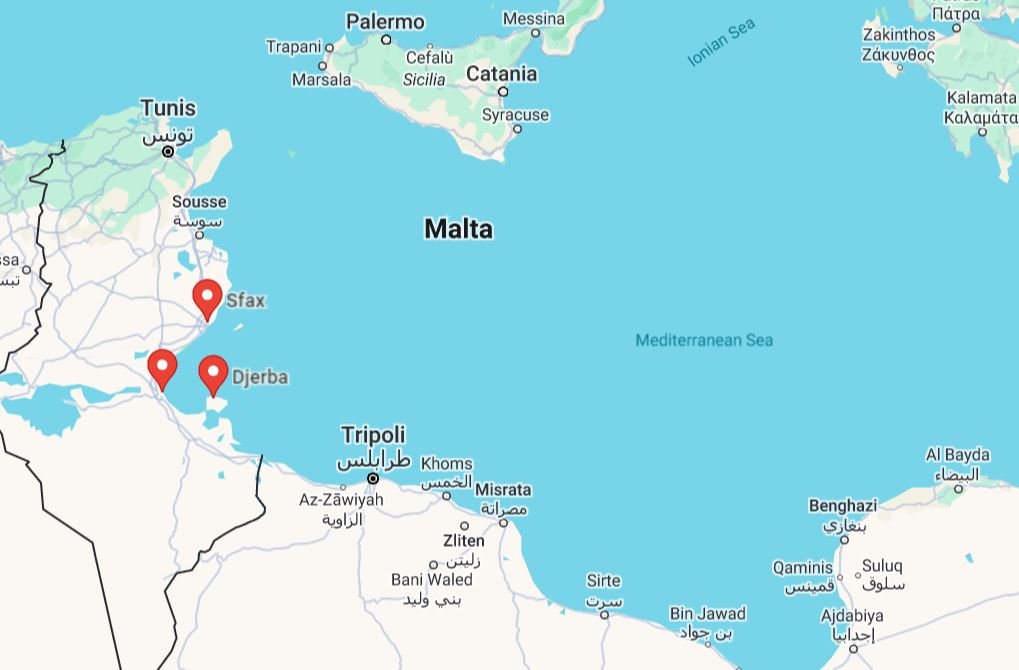Tunisian authorities reported recovering the bodies of 16 individuals off the eastern coast of Tunisia. The recovery of bodies along Tunisia's coastline has become alarmingly common. Just last month the bodies of five women and a toddler were found off Monastir, in central Tunisia, followed by the discovery of thirteen more bodies days later.
The Tunisian coast guard recovered the bodies of 16 people off the coast of the towns of Maloulech, Salakta, and Chebba, news agency Reuters reported Monday (October 28).
A senior official in the Tunisian National Guard, Houssem Eddine Jebabli, told Reuters that the bodies had been found over the weekend and on Monday.
Authorities have reportedly not been able to confirm the identities of the bodies because of the state of decomposition. It is also uncertain if the deceased were irregular migrants or if they were on board the same vessel. However, the bodies were discovered off the coastal towns of eastern Tunisia, an area known to be a popular departure point for people who want to enter Europe by crossing the Mediterranean Sea.
Read AlsoTunisia-Italy route claims more lives as experts warn of dangerous new trends
A common tragedy
Recovery of bodies along the country's coastline has become alarmingly common. In September, the bodies of five sub-Saharan African women and a toddler were found off Monastir. Days later, thirteen bodies were discovered by coastguards in the waters near Chebba and Salakta in central Tunisia.
Tunisia’s east coast, particularly the region around Sfax, has become a launchpad for people coming from sub-Saharan Africa who are looking to inch their way closer to Europe.

The Tunisian Forum for Economic and Social Rights (FTDES) reports that, in 2024 alone, about 400 migrant deaths or disappearances have occurred in Tunisian waters. This follows a devastating previous year during which at least 1,300 migrants lost their lives braving the currents of the Mediterranean in a bid to enter Europe.
The International Organization for Migration (IOM) has recorded over 30,000 deaths of migrants in the Mediterranean in the past decade, with more than 3,000 fatalities in 2023 alone.
Though it is a party to the 1951 United Nations Convention relating to the Status of Refugees, Tunisia has no asylum law or system. FTDES has criticized existing laws for criminalizing people who enter, stay, or leave the country irregularly.
Tunisian authorities have repeatedly abandoned refugees, asylum seekers, and migrants in the Tunisian desert or remote border areas with Libya and Algeria, FTDES reported.
Read AlsoConcerns over 'safety of migrants in Tunisia' expressed in new report commissioned by UN
Where EU's border control is outsourced
Located along the northern coast of Africa, some parts of Tunisia are less than 150 kilometers away from Sicily -- making it a popular departure point for irregular sea crossings. Tunisia’s neighbor, Libya, shares the same geographic proximity to the continent, also making it a popular jump-off point to Europe.
Both countries have entered into controversial deals with the EU to manage migration crossings by sea by bolstering ocean patrols and expediting repatriations. Rights advocates have slammed the EU for being complicit in human rights abuses committed by Tunisia and Libya during the conduct of border management initiatives.
Read AlsoEU signs controversial migration agreements in Africa
